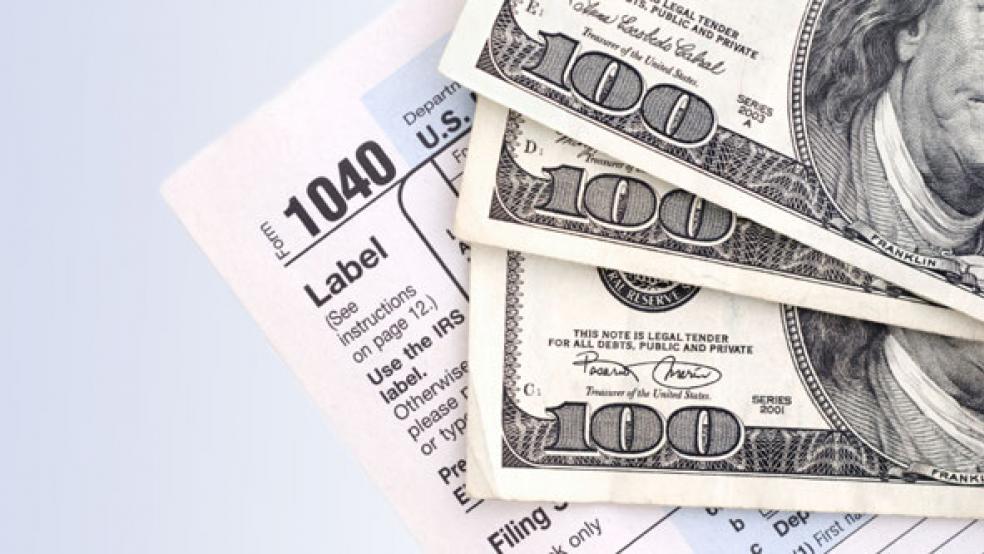As Republicans prepare to extend the 2017 Trump-era tax cuts that are currently scheduled to expire at the end of the year — or make them permanent — a new analysis by the Treasury Department finds that fully renewing the cuts would cost more than $4 trillion over 10 years, and the tab could run as high as $5.5 trillion if certain business tax changes are made as well. The report also finds that, while taxpayers across all income levels would see lower tax bills on average, top earners would get by far the largest boosts in after-tax income.
The report, published by Treasury’s Office of Tax Analysis, examined a couple of different scenarios: either a full extension of the expiring individual and estate tax provisions of the 2017 law or a more modest extension that reversed the cuts for those with incomes above $400,000 a year and also allowed the business and estate tax cuts to sunset as scheduled.
The full extension would cost $4.2 trillion between 2026 and 2035. Overall, families would see a 2.2% increase in after-tax income — a gain of about $2,000 on average — but the biggest cuts would go to those with the highest incomes, the analysis finds: “Families between the 95th and 99th percentiles would receive a tax cut of 3.0 percent of after-tax income, families in the top 1 percent but not the top 0.1 percent would receive a tax cut of 3.6 percent of after-tax income, and families in the top 0.1 percent would receive a tax cut of 4.2 percent of after-tax income.”
A bonanza for the top 1%: Those numbers translate into an average tax cut of more than $32,000 for the top 1% of earners and more than $314,000 for the top 0.1% compared to an average cut of $6 for the bottom 10% of earners.
The top 10% of earners would see roughly 60% of the benefit from the tax changes under this scenario, and the top 30% would get more than 80%.
The second scenario, in which the 2017 tax cuts are reversed for those with incomes above $400,000, would involve a much lower cost of about $1.8 trillion over 10 years. Families would get an average tax cut of 1%, or about $1,000.
The result would be the same as above for most families. Those at the very bottom would still get a $6 cut, on average while families between the 40th and 50th income percentiles would still get an average tax cut of $524, for example. But the top 5% of earners would see far smaller gains — and taxes would rise by about $15,000 a year for the top 1% and by about $100,000 a year for the top 0.1% of earners.
Republicans eye $5.7 trillion menu of cuts: President-elect Donald Trump wants to extend all the expiring tax cuts and has also made campaign promises to end the taxation of tips, Social Security payments and overtime wages, which would raise the total cost. In addition, Republicans are looking at raising the cap on state and local tax deductions from $10,000 to $20,000.
So as they plan their tax cut package, Republicans are also discussing ways to offset the cost.
Sen. Mike Crapo, the chairman of the Senate Finance Committee, has argued that they should use a so-called current policy baseline, arguing that an extension of current tax law should not officially count as costing more than $4 trillion. “If you're not changing the tax code, you're simply extending current policy—you are not increasing the deficit,” he told Fox Business this week.
Budget watchers criticize that idea as a gimmick, and Republicans continue to look for ways to cut spending to pay for their tax cuts and other priorities. Politico reports that Rep. Jodey Arrington, the Republican chairman of the House Budget Committee, has been circulating a menu of potential spending offsets that includes significant changes to Medicare, Medicaid and the Affordable Care Act. The list of options also includes cuts to welfare and food stamps as well as rolling back green energy tax credits and other Biden climate programs.
“Republicans involved in the reconciliation plans have been generally targeting the listed programs for several months, but internal GOP fights over trillions of dollars in potential cuts are just beginning,” Politico reports. “The overall savings add up to as much as $5.7 trillion over 10 years, though the list is highly ambitious and unlikely to all become law given narrow margins for Republicans in the House and Senate.”
The bottom line: Extending all the expiring 2017 tax cuts would result in lower tax bills across the income spectrum, but the new Treasury analysis, like others before it, shows that top earners stand to gain the most. Many of the options Republicans are considering to help cover the costs of the Trump agenda are likely to divide their narrow majority, and most or all will outrage Democrats and come with steep political costs.





